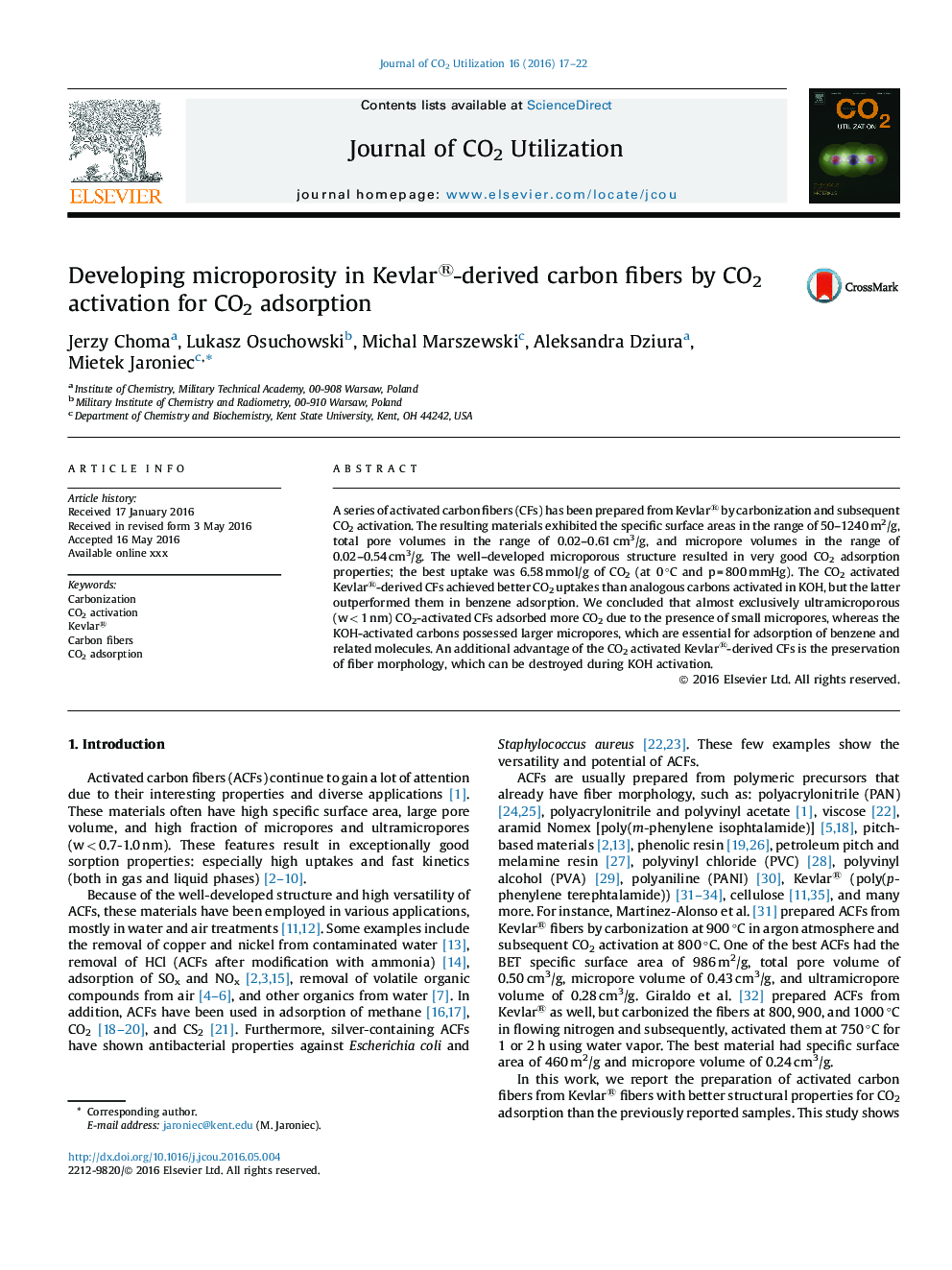| کد مقاله | کد نشریه | سال انتشار | مقاله انگلیسی | نسخه تمام متن |
|---|---|---|---|---|
| 63514 | 48222 | 2016 | 6 صفحه PDF | دانلود رایگان |
• CO2 activation preserved the fiber morphology of Kevlar®-derived carbon (KCF).
• CO2 activation of KCF is suitable for achieving high CO2 uptake at ambient conditions.
• KOH activation of KCF assures high benzene vapor uptake at ambient conditions.
A series of activated carbon fibers (CFs) has been prepared from Kevlar® by carbonization and subsequent CO2 activation. The resulting materials exhibited the specific surface areas in the range of 50–1240 m2/g, total pore volumes in the range of 0.02–0.61 cm3/g, and micropore volumes in the range of 0.02–0.54 cm3/g. The well–developed microporous structure resulted in very good CO2 adsorption properties; the best uptake was 6.58 mmol/g of CO2 (at 0 °C and p = 800 mmHg). The CO2 activated Kevlar®-derived CFs achieved better CO2 uptakes than analogous carbons activated in KOH, but the latter outperformed them in benzene adsorption. We concluded that almost exclusively ultramicroporous (w < 1 nm) CO2-activated CFs adsorbed more CO2 due to the presence of small micropores, whereas the KOH-activated carbons possessed larger micropores, which are essential for adsorption of benzene and related molecules. An additional advantage of the CO2 activated Kevlar®-derived CFs is the preservation of fiber morphology, which can be destroyed during KOH activation.
Figure optionsDownload as PowerPoint slide
Journal: Journal of CO2 Utilization - Volume 16, December 2016, Pages 17–22
